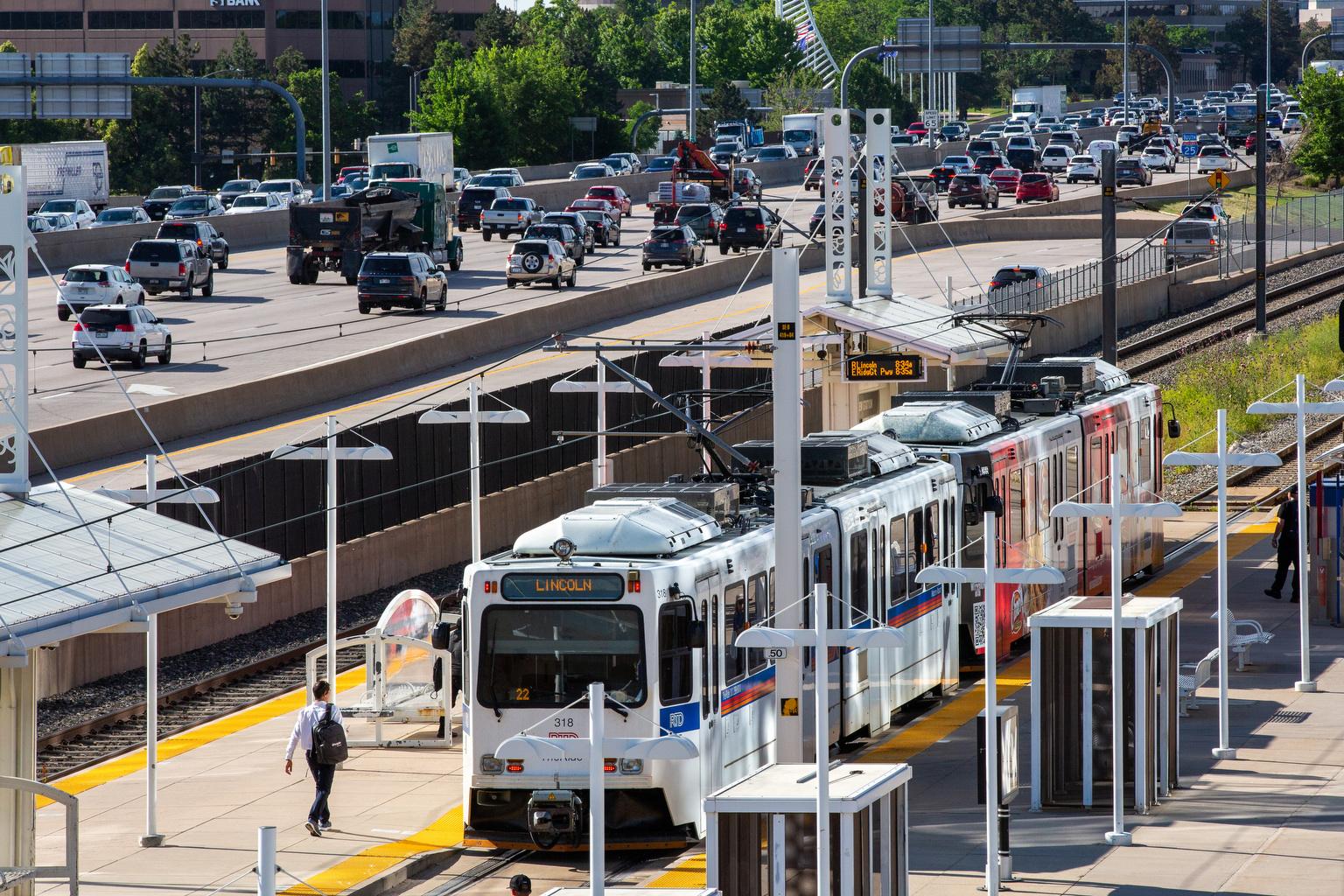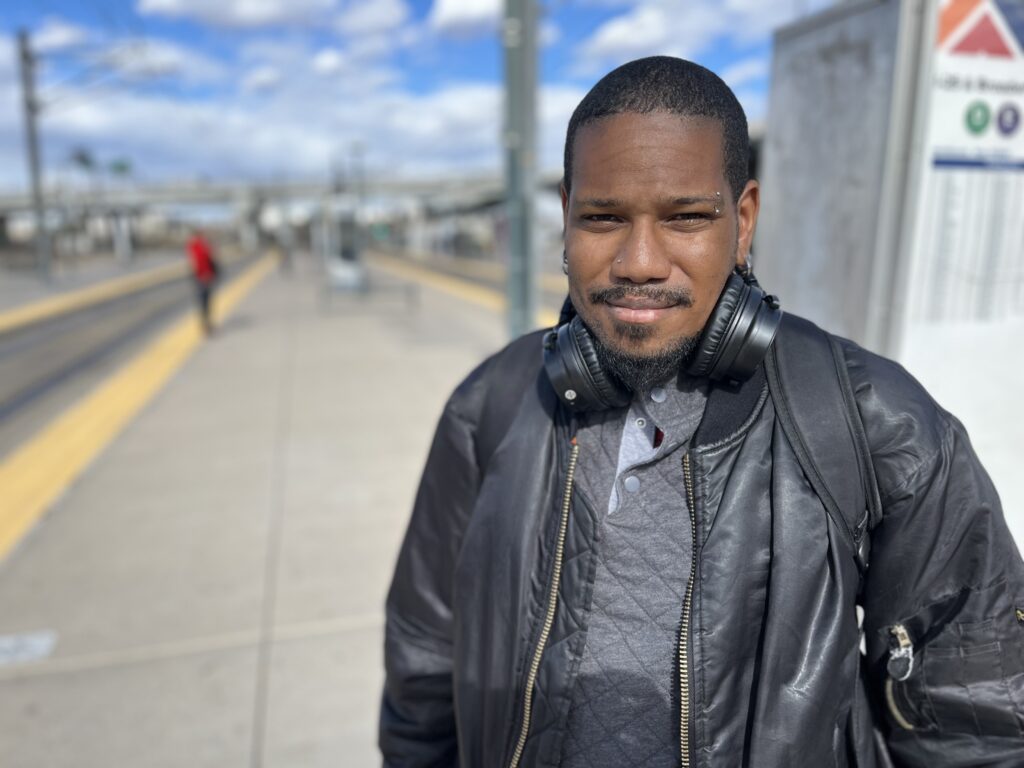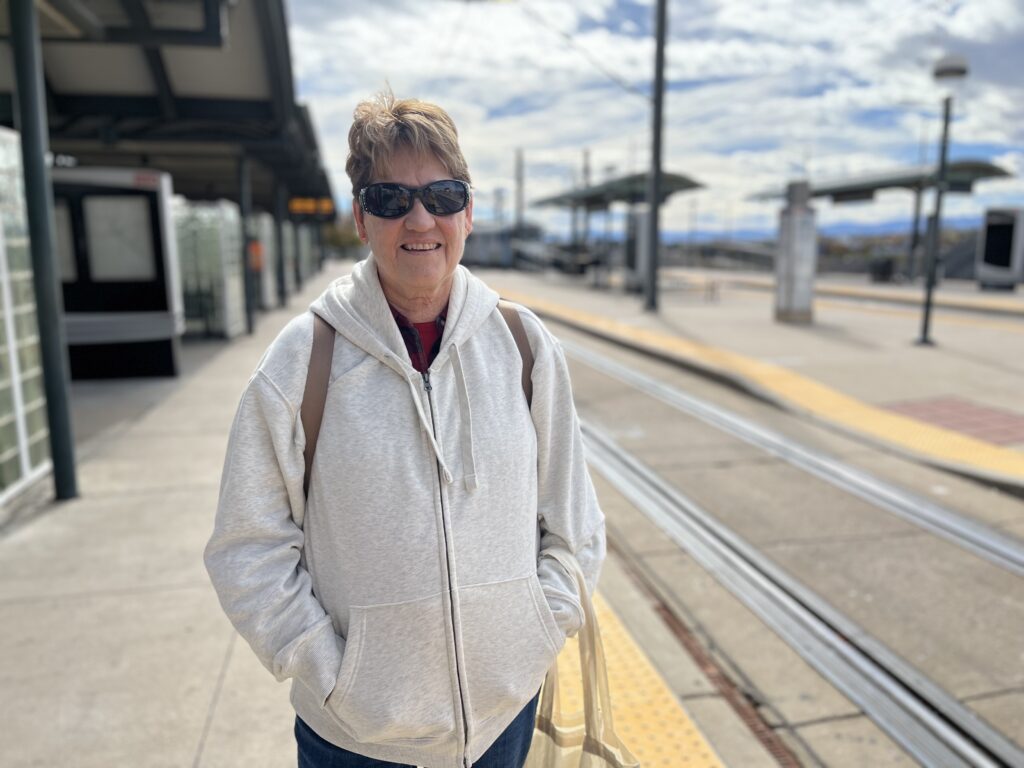
Josh Howard of Denver calls riding RTD, which he does most days, “highway robbery” because he never knows whether his bus or train will be on time – or whether it will arrive at all.
“And you still have to pay,” he said as he waited for a delayed E Line train at the I-25 and Broadway station on Tuesday afternoon.
Howard said he hasn’t yet cast his ballot. But if he can find the time before polls close Tuesday, he’ll vote against Measure 7A, which would protect RTD’s budget from the state Taxpayer’s Bill of Rights.

If Measure 7A fails, part of RTD’s budget would be subject to TABOR’s revenue and spending limits. That means RTD would have to issue taxpayer refunds if its revenues grew too fast.
RTD has predicted a relatively small impact over the next two years. But a recession and recovery would activate TABOR’s “ratchet effect” that could have a much bigger effect – perhaps even significant cuts to bus and train service.
Just a few steps from Howard, Priscilla Cross of Denver’s Corey-Merrill neighborhood was about to take her first light rail trip in months. She said a TABOR refund would likely be minor and that RTD needs the collective support of the community.

“Mass transit is going to save downtown, because downtown really emptied out during the pandemic. And parking – who wants to find parking? So RTD and mass transit is a good thing for a big city.”
Nearly 70 percent of respondents to an RTD-commissioned poll said they would support Measure 7A. But that poll was taken back in April, just before the light rail troubles started. The agency’s financial future may hinge on whether its unreliable service has alienated enough voters to doom its attempt to free itself from TABOR forever.
RTD’s troubles began in early June.
Unexpected repair work forced trains to crawl at just 10 miles per hour. Though repairs are progressing, delays have stretched on for months and it’s had a big impact on light rail ridership.
That’s especially apparent on the southeast corridor lines that primarily run along Interstate 25 from downtown Denver south to the Denver Tech Center. The E, H and now-defunct F lines used to be powerhouses that collectively carried more than 1 million passengers a month before the pandemic.
The E and H lines were recovering until maintenance work cut service starting in the summer of 2023. After RTD’s surprise track repair and replacements started in the summer of 2024 requiring the 10 mph “slow zones,” ridership has plummeted to levels not seen since the early days of the pandemic.
In August, light rail trains were on time just 60 percent of the time according to RTD documents. Commuter rail lines, by contract, were on time at least 95 percent of the time.
Howard, the regular transit rider, said he wants Measure 7A to fail so riders can hold RTD accountable.
“Do better, RTD,” he said. “Because you have a lot of people that rely on you.”
The slow zones and resulting delays initially took riders and even train operators by surprise. RTD General Manager and CEO Debra Johnson recently told CPR News that she’s learned the need to communicate better with the public about such disruptive projects in the future.
Cross, the occasional rider, said she’s glad RTD is maintaining its infrastructure. It’s unclear just how much an average taxpayer might receive from RTD if Measure 7A were to fail, but Cross said it likely won’t be significant to her life.
“I'd much rather RTD keep it,” she said.









